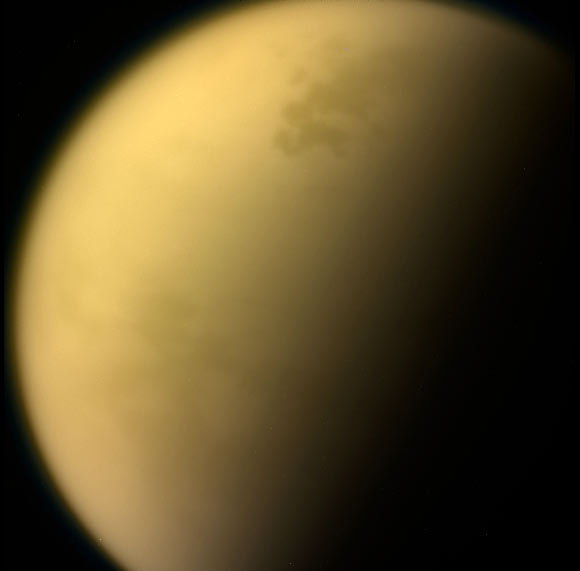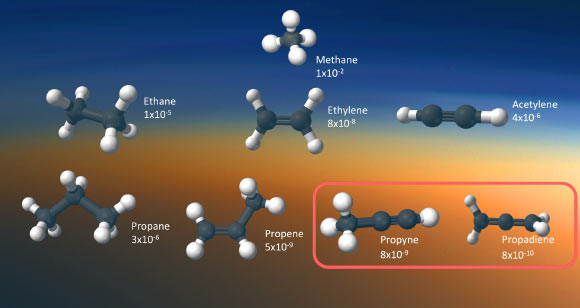Astronomers Detect Propadiene on Saturn’s Moon Titan | Astronomy – Sci-News.com
Astronomers using the NASA Infrared Telescope Facility (IRTF) have spotted propadiene — a colorless, flammable gas, best known as a fuel for specialized welding — in the stratosphere of Titan, one of our Solar System’s most intriguing and Earth-like bodies.
Titan, the largest moon of Saturn, is a carbon-rich, oxygen-poor world with a wide range of organic and inorganic compounds, atmospheric energy sources, and liquid hydrocarbon seas and lakes.
It is the only planetary body in the Solar System, except our planet, where rainfall and seasonally flowing liquids erode the landscape.
In addition to a hazy mixture of nitrogen and hydrocarbons like methane and ethane, the atmosphere of this strangely Earth-like world also contains an array of more complex organic molecules.
Planetary scientists think that this chemical make-up is similar to Earth’s primordial atmosphere.

This view of Titan is among the last images NASA’s Cassini spacecraft sent to Earth before it plunged into the giant planet’s atmosphere. Image credit: NASA / JPL-Caltech / Space Science Institute.
On Titan, complex hydrocarbons form after sunlight breaks apart methane.
The newly freed fragments can link up to form chains with two, three or more carbon atoms.
Propyne (CH3CCH), one of the lightest members of the three-carbon family, was first detected in Titan’s atmosphere during NASA’s Voyager 1 flyby in 1980.
“Propyne’s isomer, propadiene (CH2CCH2), has been predicted to be present in Titan’s atmosphere for several decades, with a predicted abundance about one-tenth of propyne’s,” said University of Maryland researcher Nicholas Lombardo and colleagues.
“We made the first unambiguous detection and measurement of this molecule on Titan, and in an extraterrestrial environment.”
“Propyne and propadiene now constitute the first hydrocarbon isomer pair detected on Titan,” they added.

One, two and three-carbon hydrocarbons of Titan’s atmosphere and their approximate volume mixing ratios at 124 miles (200 km). Image credit: Lombardo et al, doi: 10.3847/2041-8213/ab3860.
The detection was made using data from the Texas Echelon Cross Echelle Spectrograph (TEXES) on the IRTF.
“This initial measurement of the molecule in Titan’s stratosphere paves the way towards constraining the amount of atomic hydrogen available on Titan, as well as future mapping of propadiene on Titan from 26-foot (8 m) and larger ground based observatories, and future detection on other planetary bodies,” the researchers said.
The findings were published in the Astrophysical Journal.
_____
Nicholas A. Lombardo et al. 2019. Detection of Propadiene on Titan. ApJL 881, L33; doi: 10.3847/2041-8213/ab3860






